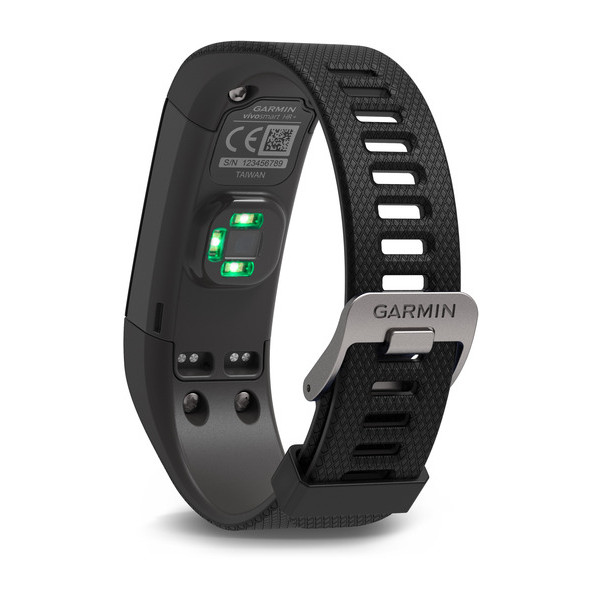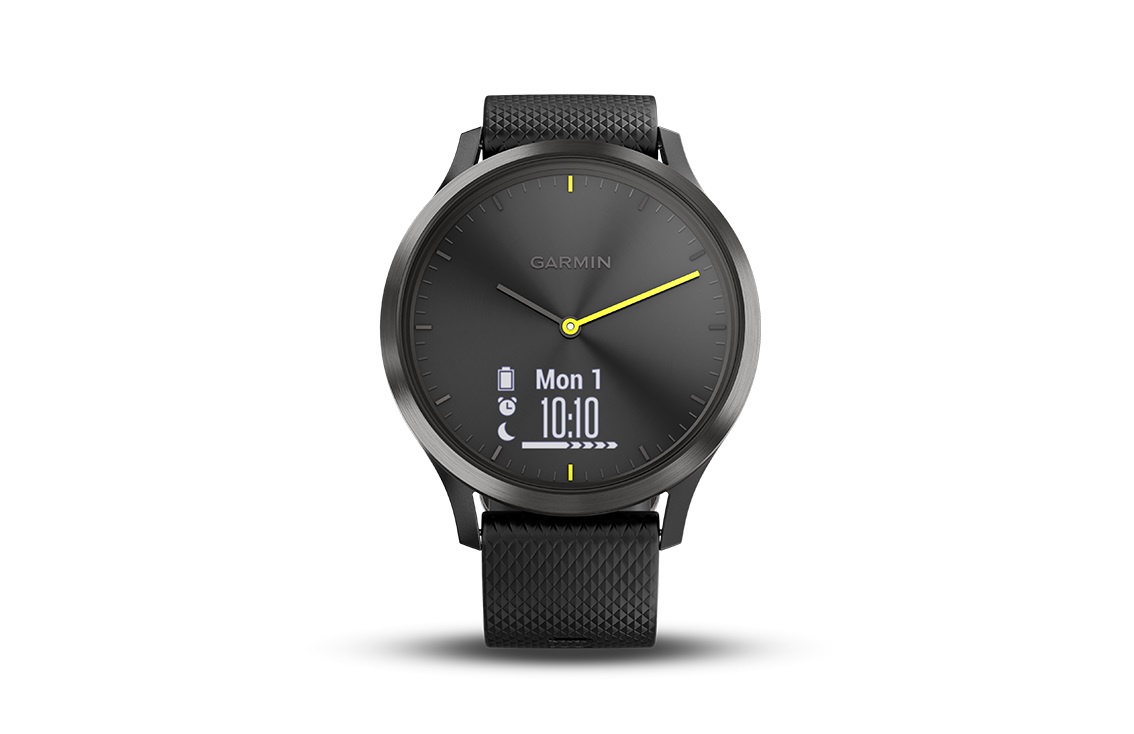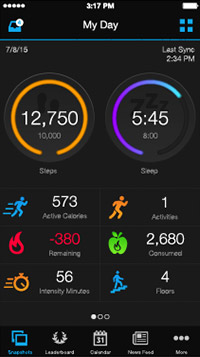Garmin is serious. The most dedicated outdoorsmen and athletes look to its rugged products for tracking everything from laps in the pool to dangerous hikes in remote places. Now the company is getting more serious about heart rate with the $150 Vivosmart HR, its first wristband activity tracker with a builtin optical heart rate monitor that the company developed itself. It sports many of the features Garmin put into its other all-purpose trackers, including step, distance, calorie, and sleep tracking, smartphone notifications, and music and action cam controls. It all connects to the newly redesigned Garmin Connect app.
Garmin Vivosmart HR Activity Tracker with Garmin Elevate Heart Rate Technology If you’re searching for the most accurate calorie counting and progress monitoring, it’s vital to track your heart rate simultaneously. But who wants to wear a cumb. Garmin vivosmart HR Review Boasting a large display, accurate activity, sleep and heart rate tracking, and smartphone notifications, the Garmin vivosmart HR is the fitness tracker to beat. This device contains a lithium-ion battery. See the Important Safety and Product Information guide in the product box for product warnings and other important information. NOTICE To prevent corrosion, thoroughly dry the contacts and the surrounding area before charging or connecting to a computer. 1 Plug the USB cable into a USB port on your.
Other than the heart rate monitor, there's nothing outstandingly new about it. However, the Vivosmart HR is a necessary product for Garmin. Not only will it compete with the forthcoming Polar A360, but, more importantly, it's going after Fitbit's $150 Charge HR with a comprehensive set of features that both novices and hardcore athletes will appreciate.


- Nov 18, 2015 Tech — Garmin’s Vivosmart HR reviewed: Don’t buy a Fitbit before considering this band The $150 all-purpose tracker may not have Fitbit's modern exterior, but its internals are solid.
- Manuals and User Guides for Garmin VIVOSMART HR+. We have 2 Garmin VIVOSMART HR+ manuals available for free PDF download: Owner's Manual Garmin VIVOSMART HR+ Owner's Manual (184 pages).
- The Garmin Vivosmart HR is a band based fitness tracker with a 1.1 inch touchscreen LCD display, real-time heart rate monitor, step counting, sleep tracking and calories burned.
Design: Don't fix what isn't broken
The Vivosmart HR looks like a marriage of the Vivosmart band and the Vivofit 2. It has a module with a 1.00 x 0.42-inch,160 x 68-pixel touchscreen that sits atop the wrist, with a single physical button on the right side of it. It's embedded into a flexible, silicone band that mimics a regular watch strap, but this has rectangular notches rather than tiny holes. That subtle change makes it super easy to adjust and fasten, so you can make it as loose or as tight as you want depending on when you're wearing it (you'll want to have it on pretty tight when you plan on using the heart rate monitor heavily).
On the underside of the device is the optical heart rate monitor and the four tiny nodes for charging. The charging cable has an odd fastener on it that you have to fit the band into in order for it to power up via USB. The nodes are not magnetic either, so I often had to fiddle with the charging cable before I finally snapped it into place correctly.
Garmin Vivosmart Hr Activity Tracker User Manual Free Download
Despite the display's basic, monochrome style, I really liked it. The numbers that show the time digitally are big and easy to read, and the entire display is super clear in direct sunlight as well. In the Garmin Connect app, you can choose if you want its blueish backlight on always, never, or only during activity and when tapped. I found myself wishing the backlight was brighter, but that's an issue most Garmin devices have had for ages. It also times out pretty quickly if you have it set to only turn on when woken by a tap or activity tracking, so I would suggest keeping it always on if you have eye troubles.
The Vivosmart HR is water-resistant up to 5 ATM, or about 50 meters. That's better than the comparable Fitbit Charge HR, which is only splash-resistant. The band is supposed to last up to five days on a single charge, and my band was down to about 20 percent battery during my fourth day of use.

Setting up the device is simple enough: just download the Garmin Connect app and follow the pairing instructions after you sign in or create an account. The Vivosmart HR pairs via Bluetooth to your Android or iOS device, and it does so during setup from within Garmin's app rather than in the Bluetooth settings on your smartphone. I didn't have an issue setting up the device, but it did have occasional syncing issues. You can initiate a sync by opening up the app or by tapping the sync icon on the band; sometimes the band wouldn't automatically sync when I opened the app.
A Garmin representative told me to update the Vivosmart HR's software to see if that would fix the problem. To do so, you must connect the device to your computer via its USB charger and sync it with Garmin Express, which you can download from Garmin's website. It's basically a device management system that is mostly good for software and firmware updates. Sure enough, my Vivosmart HR needed to be updated to the most recent software, and after I did so, it synced to the app quickly and easily. (I should also mention that Garmin was doing maintenance on its Connect app while I reviewed the Vivosmart HR. This slowed me down as it disrupted syncing, but after the maintenance was finished, things went back to normal.)
Features: The usual suspects, with an accurate heart rate monitor
Garmin is certainly trying to take Fitbit's Charge HR head-on with the Vivosmart HR. It tracks steps, calories, distance, floors climbed, and sleep, which is exactly what the Charge HR does. A note on sleep tracking: the Vivosmart HR monitors deep and light sleep, as well as the number of times you wake up each night. During setup, one of the things you have to tell the device is the time you typically go to bed each night and the time you wake up each morning. The tracker uses those times as guidelines. It automatically assumes you're asleep when it senses no movement in that window of time, and it also silences the vibration alerts on the band so any phone activity won't wake you up.
One of the new metrics tracked is 'intensity minutes,' which piggybacks on the recommendation of organizations including the US Centers for Disease Control and Prevention and the American Heart Association that you should get at least 150 minutes per week of intense activity. According to Garmin's Vivosmart HR manual, you can gain intensity minutes by participating in '10 consecutive minutes of moderate to vigorous intensity activities.'
The biggest new feature is Garmin's Elevate optical heart rate monitor embedded in the wristband. It continuously monitors your pulse, learning your average heart rate over time. I like being able to check my heart rate at any time by swiping to the appropriate page on the display, and seeing my average heart rate puts the real-time number into perspective. I checked my pulse multiple times a day this way and tested the monitor's accuracy the old-fashioned way: taking my pulse with my finger over the artery in my throat. Each time the monitor was within 5 bpm of my reading.
User Manual For Garmin Vivosmart Hr
The heart rate monitor is on when you work out as well, and the readings will show up when you swipe the display while tracking a workout. With runs, you can swipe through time, distance, calories, heart rate, and clock screens, and if you just want to be able to glance down at a specific metric while you're training, you can just swipe to that page and leave it there. Heart rate and distance are what I like to focus on when I jog, so I often kept the display showing those. I also like that when you stop tracking an activity, you can choose to save it or discard it—this makes it super easy to filter out any activities that may have been interrupted for some reason or just ones you're not particularly happy with.
There's also broadcasting mode for the heart rate monitor, which shares your pulse with a connected Garmin ANT+ compatible device such as an Edge cycling tracker, the VIRB action cam (which you can also control via the Vivosmart HR), or even a Vivoactive smartwatch which can track swimming. Polar's upcoming A360 wristband can do the same thing, sharing your heart rate information with other Polar products that don't have monitors already in them.
While the Charge HR shows you call and text alerts, the Vivosmart HR displays all the notifications your smartphone gets including texts, calls, emails, calendar events, Facebook, Twitter, and more. It's one of those bands that just floods your wrist with notifications, even if your smartphone doesn't light up with them. I don't disable any notifications on my iPhone 6, but some do not wake up the display because they aren't important enough for me to want to see immediately. Even those alerts come through on the Vivosmart HR, so often I would look down at my wrist and see just a random notification that a friend had checked-in at Shake Shack on Swarm. If you want to disable any notifications from coming through on the band, you'll have to go into the settings on your smartphone and disable them for your device as well.
Garmin Vivosmart 3 Manual
In the drawer of miscellaneous features, the Vivosmart HR has music controls on its display, letting you pause and skip back and forth between songs while you work out. The only app I was able to use it in was iTunes, though, so Spotify and Google Music users are out of luck with this. If you've been slumming it on the couch or at your desk for over an hour, the band will vibrate to tell you to move a little. But the feature I used more than I'd like to admit is the find-my-phone feature: tap the phone icon in settings, and the band will send a jingle to your smartphone in case you've lost it.